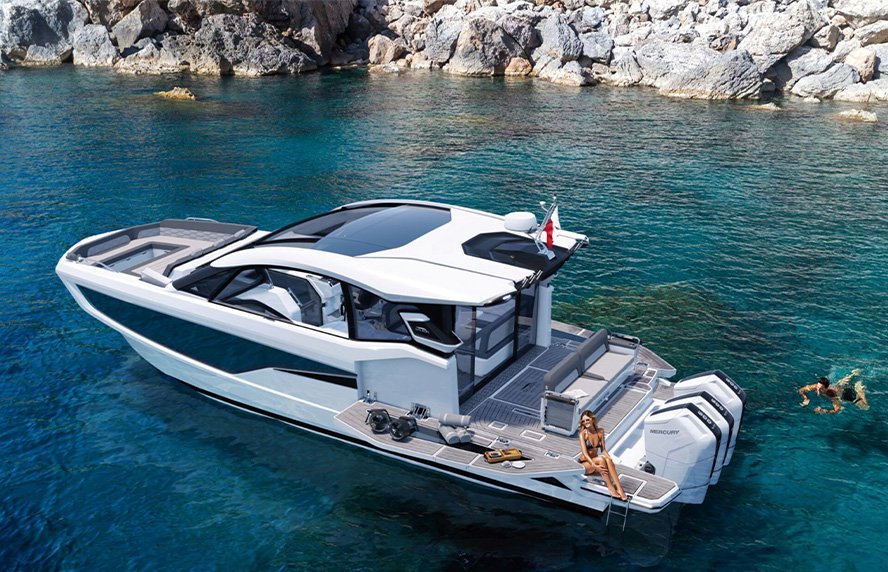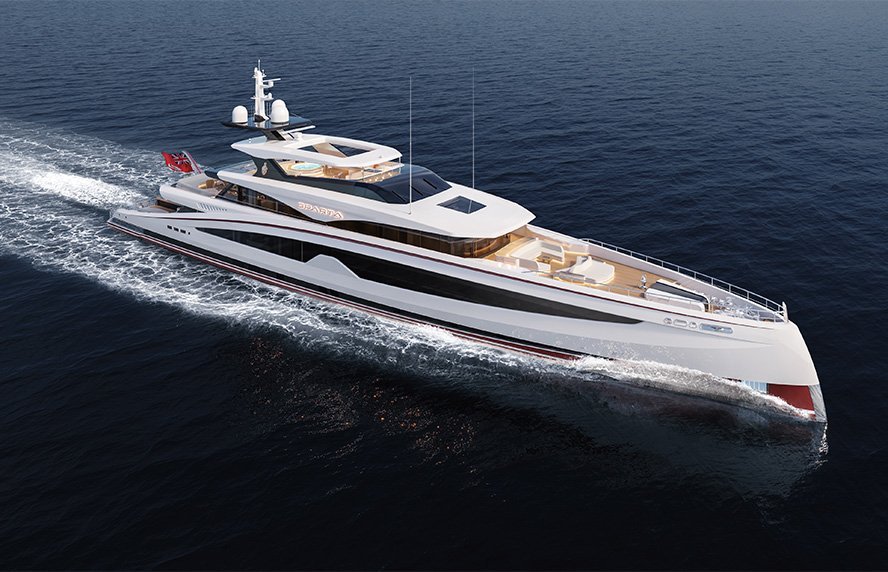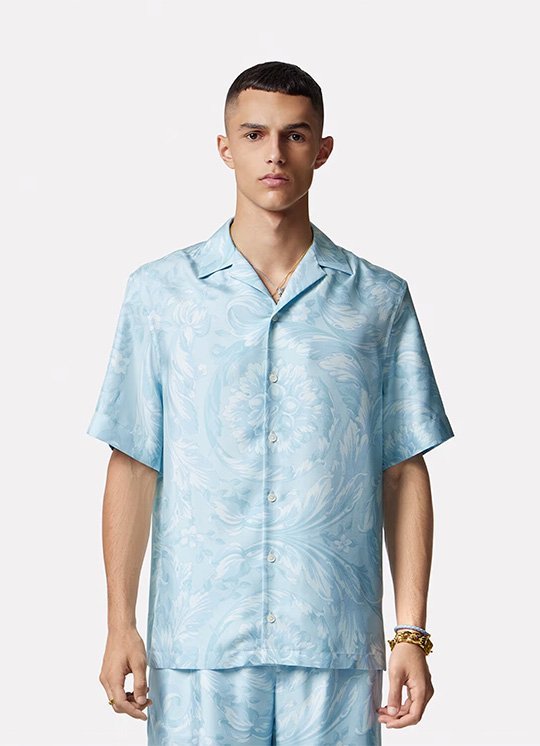She thought dentistry would take up a large part of her life, until the impossibility of living without the decorative arts intervened. Changing gears, Rita Valadão graduated in interior architecture and decorative arts, the starting point for a successful career. In 2015, she created her own studio and, well, seven years later TRENDS went to find out what Rita Valadão’s company has become today. Welcoming us with a warm smile and her expressive blue eyes, the interior designer tells us about herself, her studio and interior design in the Portuguese context.
Rita Valadão
"I get emotionally involved in the projects”

How did interior design come into your life?
Dentistry came before interior design. In the meantime, I realised that it wasn’t what I wanted. I’ve always liked decoration, decorative arts, colours, textures, furniture.... So, I thought I might go into interior design. And so, I did.
You eventually set up your own studio, with a view to designing distinctive and coherent spaces. How do you describe the typical identity of a Rita Valadão project?
I usually say that I don't have my own identity. A project is also the "face” of the client. As a rule, our work is geared towards the type of client. We have many who come from abroad, for example. Our clients are more foreign than Portuguese. And it is, in essence, a demand and integration according to the type of client and their experiences, along with what we can provide.
The client assumes that the project is Rita Valadão, usually from the colour and texture. I like to use colour and prefer not to mix materials. I work a lot with smooth and different textures, but not so much with patterns.
A project requires a lot of dedication. On average, how long do you stay involved in one job?
It takes some time. Our projects don’t usually involve only interior decoration, there is also the refurbishment stage. Our last project, for example, involved destroying almost the entire interior of the house and doing it from scratch, before moving on to decoration. That's why I insist so much on interior architecture and interior design. Both are distinct but complement each other. For this particular project, it took 17 months. Usually, if the project involves refurbishment, it takes longer. If it is only for decorative purposes, it is faster. It depends on many conditioning factors.
When designing a space, what are your main concerns?
My first concern is the natural light of the place. Then, understanding the space itself and how we can optimise it, keeping the aesthetics combined with the function.
"People started (...) to have a different perspective of the space in which they live in”
Dentistry came before interior design. In the meantime, I realised that it wasn’t what I wanted. I’ve always liked decoration, decorative arts, colours, textures, furniture.... So, I thought I might go into interior design. And so, I did.
You eventually set up your own studio, with a view to designing distinctive and coherent spaces. How do you describe the typical identity of a Rita Valadão project?
I usually say that I don't have my own identity. A project is also the "face” of the client. As a rule, our work is geared towards the type of client. We have many who come from abroad, for example. Our clients are more foreign than Portuguese. And it is, in essence, a demand and integration according to the type of client and their experiences, along with what we can provide.
The client assumes that the project is Rita Valadão, usually from the colour and texture. I like to use colour and prefer not to mix materials. I work a lot with smooth and different textures, but not so much with patterns.
A project requires a lot of dedication. On average, how long do you stay involved in one job?
It takes some time. Our projects don’t usually involve only interior decoration, there is also the refurbishment stage. Our last project, for example, involved destroying almost the entire interior of the house and doing it from scratch, before moving on to decoration. That's why I insist so much on interior architecture and interior design. Both are distinct but complement each other. For this particular project, it took 17 months. Usually, if the project involves refurbishment, it takes longer. If it is only for decorative purposes, it is faster. It depends on many conditioning factors.
When designing a space, what are your main concerns?
My first concern is the natural light of the place. Then, understanding the space itself and how we can optimise it, keeping the aesthetics combined with the function.
"People started (...) to have a different perspective of the space in which they live in”

Is there any relationship between the spaces you create and your emotional state or the stage of life you are in?
I don't think so. I get emotionally involved in the projects, but I manage to divide my personal and work life well. Now, when it comes to handing over a project to a client, I always have a void inside me. It symbolises a separation, but not from the clients, because many become my friends. But then the feedback is rewarding. The best feeling you can have is that it was all worth it.
Are you detached from objects?
I’m very detached in my personal life, in my home. I have a special affection for what I put in the client's home, because it was me or someone from the team who designed the object. There's always that feeling of "that piece is mine” (she laughs).
Is sustainability already a serious concern for the atelier?
Yes. At the moment, we are working with construction teams that already approach the issue differently. The use of materials, avoiding waste, is something we do. Sometimes materials are wasted and we try to make the most of them by using them in other projects or in small constructions of pieces of furniture. There are also several materials that we are no longer using, replacing them with recyclable and at the same time long-lasting solutions.
How would you characterise the evolution of interior design in Portugal?
Everything is different from many years ago. For the better. Interior design used to be thought of as just decoration, which is not true. It involves architecture, because when we renovate a house, we think about windows, shutters, doors, all the fixed carpentry... A few years ago, it was the architect who designed and placed the furniture in the client's house. Today, and I know this because I do it, we can work in partnership with architectural firms.
"Our projects don’t usually involve only interior decoration”
I don't think so. I get emotionally involved in the projects, but I manage to divide my personal and work life well. Now, when it comes to handing over a project to a client, I always have a void inside me. It symbolises a separation, but not from the clients, because many become my friends. But then the feedback is rewarding. The best feeling you can have is that it was all worth it.
Are you detached from objects?
I’m very detached in my personal life, in my home. I have a special affection for what I put in the client's home, because it was me or someone from the team who designed the object. There's always that feeling of "that piece is mine” (she laughs).
Is sustainability already a serious concern for the atelier?
Yes. At the moment, we are working with construction teams that already approach the issue differently. The use of materials, avoiding waste, is something we do. Sometimes materials are wasted and we try to make the most of them by using them in other projects or in small constructions of pieces of furniture. There are also several materials that we are no longer using, replacing them with recyclable and at the same time long-lasting solutions.
How would you characterise the evolution of interior design in Portugal?
Everything is different from many years ago. For the better. Interior design used to be thought of as just decoration, which is not true. It involves architecture, because when we renovate a house, we think about windows, shutters, doors, all the fixed carpentry... A few years ago, it was the architect who designed and placed the furniture in the client's house. Today, and I know this because I do it, we can work in partnership with architectural firms.
"Our projects don’t usually involve only interior decoration”

Is there now a greater interest in requesting the services of an interior designer?
Absolutely. Nowadays, people don’t have time to dedicate to their homes. The pandemic can also explain the greater interest in the services of designers. People, as they were working in their homes, started to realise that things were not working. It was interesting how many projects we had during the pandemic, where clients wanted to change their home, even a little bit. Basically, people started to have a different perspective of the space in which they live. Until that point, life was hectic and they only came back at dinner time, but when they started to be under one roof for 24 hours - where they had to work, cook, exercise - they started to realise what was out of place and what really didn’t work.
Can you think of three tips to transform a space into something more pleasant and cosy?
In a kitchen, for example, the materials need to be durable and functional. The durability of the material, combined with aesthetics, is paramount. Built-in cupboards too. Plants, without a doubt. Natural plants all over the place. The plant is life, it is a colour that gives harmony and freshness to the space.
Who have been the great influences in your life?
One of my great inspirational figures is Graça Viterbo, who used to draw everything by hand. In terms of furniture, I love Charles and Ray Eames, who built and designed the most comfortable chairs I have ever known. I still use their furniture, even.
What projects do you have in mind for the future?
This year, we already have projects underway. We are completing a chalet in Sintra, a real surprise. It’s a project that reinterprets classic elements. The idea is not to imitate, but to reinterpret a 19th-century house, which was quite run-down. We also have several homes, which are actually our strength. I have also been challenged by a friend to decorate a restaurant. And we have more projects. So, the outlook is good. But I also love other things. I enjoy going to the gym, the outdoor life, cooking and travelling. I always make the most of travelling to see the architecture of museums, as well as to see shows.... I always come with inspiration, whether it's from a church or a friend's house. I do many other things, although interior design is my biggest passion.
Absolutely. Nowadays, people don’t have time to dedicate to their homes. The pandemic can also explain the greater interest in the services of designers. People, as they were working in their homes, started to realise that things were not working. It was interesting how many projects we had during the pandemic, where clients wanted to change their home, even a little bit. Basically, people started to have a different perspective of the space in which they live. Until that point, life was hectic and they only came back at dinner time, but when they started to be under one roof for 24 hours - where they had to work, cook, exercise - they started to realise what was out of place and what really didn’t work.
Can you think of three tips to transform a space into something more pleasant and cosy?
In a kitchen, for example, the materials need to be durable and functional. The durability of the material, combined with aesthetics, is paramount. Built-in cupboards too. Plants, without a doubt. Natural plants all over the place. The plant is life, it is a colour that gives harmony and freshness to the space.
Who have been the great influences in your life?
One of my great inspirational figures is Graça Viterbo, who used to draw everything by hand. In terms of furniture, I love Charles and Ray Eames, who built and designed the most comfortable chairs I have ever known. I still use their furniture, even.
What projects do you have in mind for the future?
This year, we already have projects underway. We are completing a chalet in Sintra, a real surprise. It’s a project that reinterprets classic elements. The idea is not to imitate, but to reinterpret a 19th-century house, which was quite run-down. We also have several homes, which are actually our strength. I have also been challenged by a friend to decorate a restaurant. And we have more projects. So, the outlook is good. But I also love other things. I enjoy going to the gym, the outdoor life, cooking and travelling. I always make the most of travelling to see the architecture of museums, as well as to see shows.... I always come with inspiration, whether it's from a church or a friend's house. I do many other things, although interior design is my biggest passion.







